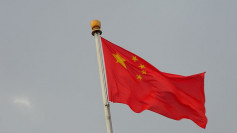Vietnam's decision to ratify the trade pact was released despite the growing tension of trade war between two of the world's largest economies, China and the United States. To add tension to the trade pact, United States President have, for several times, publicly criticized the trans-Pacific trade agreement. For a number of times, President Trump has labeled the trade pact as a "job killer."
As of this writing, eleven countries have adopted the revised and trimmed-downed version of the Trans-Pacific Partnership, more commonly known as TPP. This new trimmed down version was ratified and adopted without the United States, despite the fact that the previous U.S. administration under President Barack Obama has supported the adoption of the pact.
Last month, Australia became the sixth country to ratify the trimmed-down version of the Trans-Pacific Partnership. The trimmed-down version of the TPP is now known as the Comprehensive and Progressive Agreement for Trans-Pacific Partnership or CPTPP.
Following the recent inclusion of some top world economies, Vietnam quickly followed suit with a unanimous vote from the country's lawmakers. In a statement released to the public from the head of Vietnam's National Assembly Mr. Nguyen Van Giau, he described it as an important political decision and it is a testament to the country's continuing commitment towards international integration.
Vietnam has been viewed by many economic observers as one of the fastest growing economies in the region. The country's fast-growing economy has been attributed by many to its vastly open access to the massive American market. Because of this access, Vietnam has an almost unequal access to America's almost unlimited demand for affordable manufactured goods like shoes and t-shirts.
According to many analysts, Vietnam's decision to join the trans-Pacific pact will put the country into a binding framework with other members. This means that the country can enjoy lower tariffs from other members, as well as open access to their markets.
The deal is also expected to improve new labor standards. This is an important side note since Vietnam is a communist state where all labor unions are controlled by the one-party state.
Despite the absence of the United States in the Comprehensive and Progressive Agreement for Trans-Pacific Partnership, the pact is still viewed as a positive driving force by many economic analysts. The deal puts together a group of rapidly growing economies which account for around 14 percent of the world's total trade.






